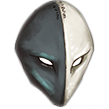Choose compelling settings for your encounters. When encounters take place in a building or lair, the most significant environmental features originate from the occupants, both past and present. Think about their tastes, biology, or wealth. These features could be natural, such as the sickening reek of decay in the lair of a great predator. They could also be alchemical, such as a cloud of poisonous gas, or magical, such as a strange electric current that arcs through the walls and occasionally leaps out at passersby.
In some cases, you'll have a location in which an enemy always appears, and you can design your location to suit that specific creature. Other times, an encounter might appear in a variety of places, such as a guard patrol or wandering monster. In these cases, you'll need several terrain and structure options so there's something interesting about the environment no matter where the battle takes place.
Features on the map have a substantial impact on the flow of combat. Three considerations to keep in mind when designing a map are maneuverability, line of sight, and attack ranges. Even empty rooms and corridors can provide variety based on their size and shape. Narrow passageways make natural choke points. In particularly small rooms, space is at a premium, favoring melee combatants and making area effects hard to aim without friendly fire. By contrast, huge areas lend themselves to spread-out combat, which gives plenty of room to use all manner of abilities but poses challenges for ones with limited range. To make large rooms more interesting, add furniture, stalagmites, or other features the PCs and their foes can duck behind for cover.
In most cases, the PCs enter territory that's far more familiar to their foes than it is to them. NPCs and monsters who live in an area are likely to be adapted to its dangers, either because they know where they are and how to avoid them, or because they are unaffected by them. A kobold in their lair might bait a PC into walking into a trap the kobold avoided. Marshland may be troublesome terrain for most PCs, but it poses little inconvenience to amphibious creatures. When using creatures with the ability to burrow, climb, or swim, consider incorporating features such as mazelike corridors, high walls with platforms, or rivers. If the foes are smaller or larger than the PCs, consider including paths, cubbyholes, staircases, or narrow passages that one side of the fight can use more effectively.
Sometimes, though, the PCs must defend their own base from intruders. In these situations, you're flipping the script, so give the PCs time to trap and ward the area. Watching the invaders fall prey to hazards and ambushes can be a delightful change of pace for your players.
On a bright, sunny day, the PCs see clearly and fight without obstruction, but adding wind, precipitation, or fog creates additional challenges. Rain creates sloshy, muddy ground that slows movement, and cold weather introduces the threat of slippery patches of ice. Only the most extreme temperatures have a direct impact on the PCs during an encounter, but a slog through blistering heat or freezing cold can leave the PCs worn out and more vulnerable to foes. Light levels play a key role in both outdoor and indoor encounters. Although torches are plentiful, their reach is limited, and lights are sure to draw attention in dark areas.
If you include terrain that’s tricky to navigate or takes extra work to deal with, consider whether it should count toward the encounter’s XP budget. A fight that requires Climbing, Swimming, or pushing through difficult terrain can be much tougher—especially if the enemies have strong ranged attacks. Think about the impact of the terrain in advance, especially if the battle would already be a severe threat, or you might kill the party. You can pick an equivalent monster level for your terrain and factor that into your budget, or just assign extra XP at the end if the threat without terrain is on the low or moderate end.
 Licenses
Sources
Licenses
Sources
 Contact Us
Contributors
Support the Archives
Maximize Menu
Contact Us
Contributors
Support the Archives
Maximize Menu
 Licenses
Sources
Licenses
Sources
 Contact Us
Contributors
Support the Archives
Contact Us
Contributors
Support the Archives









